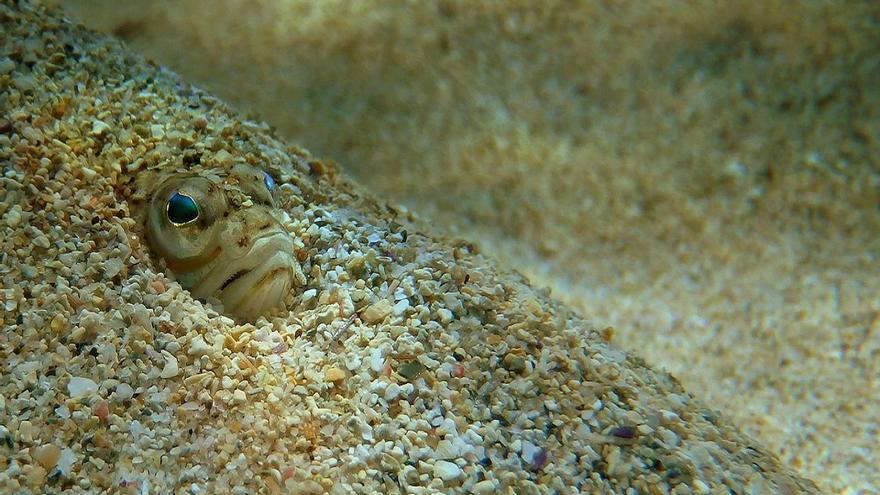Beach vacations are not without dangers, especially from marine fauna such as jellyfish and spiderfish. A casual encounter with these creatures can ruin a day at the beach, so there’s no need to know how to act in these situations.
related
For this, the best known for such accidents is the SEMES animal assistance group of the Spanish Society of Emergency and Emergency Medicine.
The first thing to explain is Dr Beatrice RodriguezThe doctors, veterinarians and coordinators of GRAAN SEMES say that in general the damage we do to us from jellyfish and spider fish is mild, limited to feeling itching, pain and inflammation in the affected area.
Severe reactions to these bites are very rare and, if they do occur, we can recognize them by symptoms such as: “seizures, shortness of breath, abdominal pain, fever or other systemic symptoms such as anaphylactic shock,” the doctor added. In these cases, what we must do is “activate emergency services and transfer the victim to hospital for treatment”.
What kind of diseases can be infected by bathing in public swimming pools?
What should you do if you get stung by a jellyfish?
The most feared and most vulnerable protagonists are jellyfish. These account for more than 60% of incidents occurring along the coast. “The area where the jellyfish gives us problems is the tentacles, which house the nematocysts full of toxins. So if it is necessary to treat her necessary, we have to do it for the sake of her body”, warns the doctor.
In any case, the wisest course of action is to avoid bathing when authorities sound the alarm about their abundance, or to remain vigilant and avoid contact. “It is also not uncommon to see dead animals washed ashore. In such cases, we must also avoid touching them, as their toxins may remain active and cause harm,” the expert said.
Despite all precautions, if you encounter jellyfish, the general advice is to:
-
Clean the area with seawater or 50% diluted vinegar.
-
“It is also important to remove foreign bodies (tentacles…) with tweezers or any other object, although we should not manipulate them directly because we may increase the lesion”, explains Dr. Rodriguez.
-
“Similarly, we would avoid direct scratching, and we would apply indirect localized cold compresses without rubbing (ice wrapped in a cloth).”
Beyond that, experts insist that the lesion should not be washed with fresh water or put on a compression bandage. If the bite reaction does not stop or worsens, it is up to the doctor to decide whether “pain relievers, antihistamines, ointments to relieve symptoms, antibiotic treatment, and if needed, a tetanus vaccination can be given.”
Spiderfish, stingrays or sea urchins
There are two other marine species that will give us trouble this summer. They are spider fish or scorpion fish and stingrays. “They’re usually buried in the sand so it’s not difficult to step on them, for spiderfish they stick to their 4 dorsal fin spines and for rays they stick to the serrated venom on their tail thorns,” explains GRAAN SEMES coordinator.
If either of these two fish bites us, what we should do is “remove the foreign body and neutralize its heat-labile toxins (nerve and cardiotoxicity), we must put the affected member into hot water at 45℃ Medium 60-90 minutes”.
But we must not stop there. It is best to go to a health service to assess “the patient’s vaccination status due to its potential tetanus effect”.
Another species of stingray is the torpedo fish or electric stingray or barbed stingray, commonly found off the coast of Andalusia, which produces electrical discharges that are usually not fatal.
-
“We may also come across sea urchins, which are usually attached to rocks or the bottom of the sea, and when you step on them, their spines get lodged in the skin.”
Beatriz Rodríguez says that in this case, the spikes should be removed with tweezers whenever possible. This is important because if not all stools are removed, they may be reabsorbed.
In addition to all these animals, experts warn that in the depths we can also find invertebrates such as sea anemones (sea surface), corals, sponges, starfish or sea cucumbers, which may be interested in scuba diving, snorkeling or fishing hobbies cause harm. .
These types of species often cause minor injuries such as irritant contact dermatitis and sometimes conjunctivitis.
bath rash
Finally, emergency experts warn that there is another very common injury called bath rash. It is produced by exposure to the larvae of Edwarsiella lineata, a sea anemone that injects the toxin intradermally.
Are you allergic to swimming pool chlorine?symptoms and treatment
-
“It typically occurs in areas of swimwear or other accessories that come in contact with the skin, trapping the larvae on it. The treatment is to remove all of these objects and do a strong wash with seawater.”
The most common symptom of these bugs in our swimsuits is the development of irritated dermatitis.
Dr. Rodriguez concluded: “In order not to spoil our vacation as much as possible and avoid unpleasant experiences, we must respect the marine environment and interfere with the lives of marine animals as little as possible.” He recalls that although most interactions were Occasionally, sometimes, these animals protect themselves from us because they perceive us as a danger.

